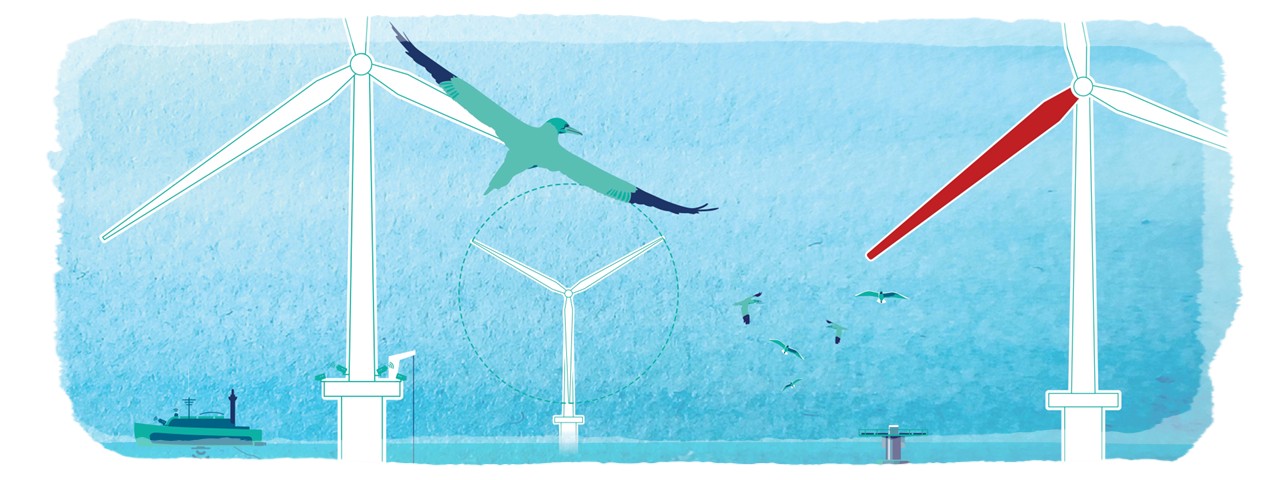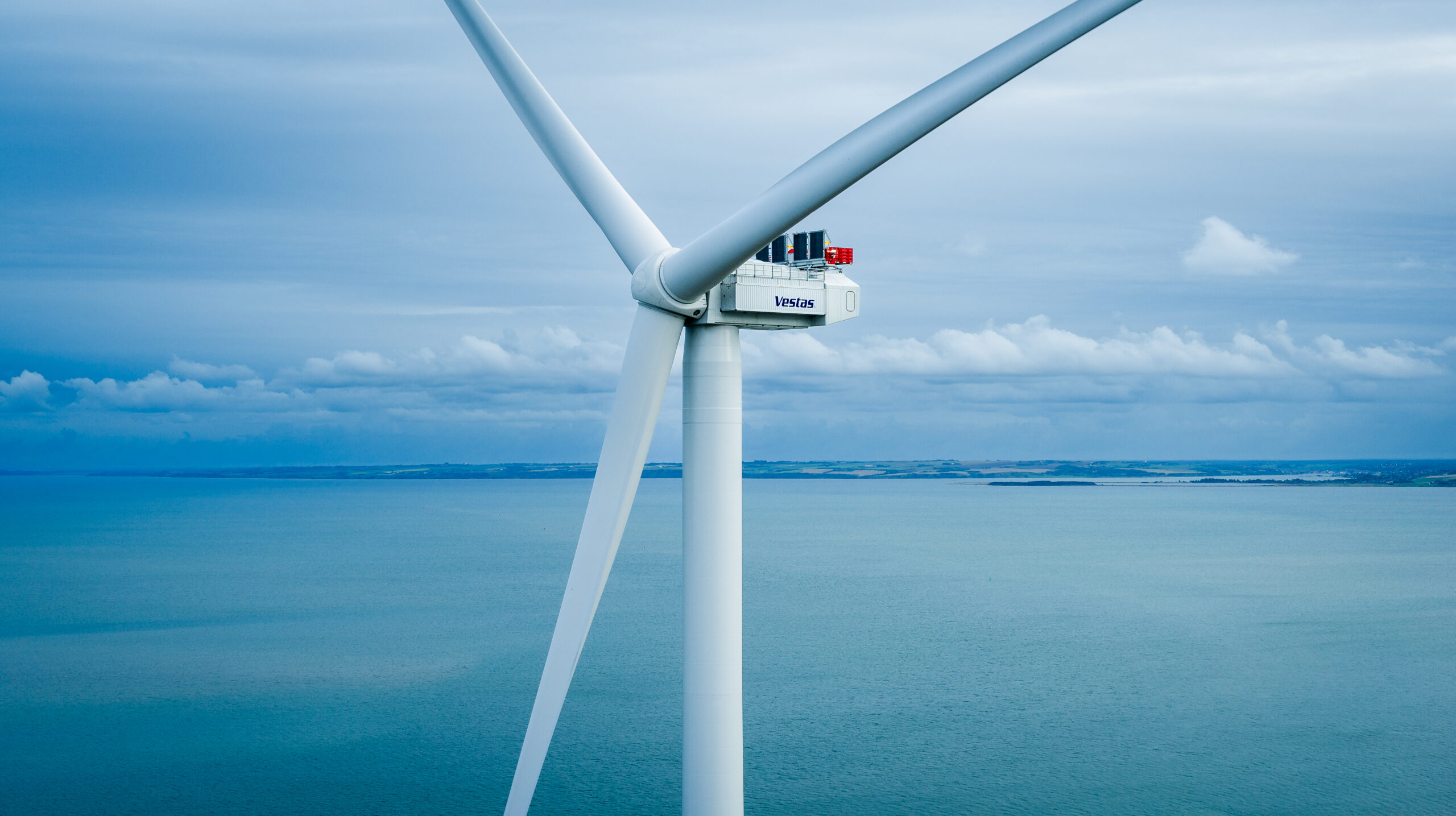Vestas and Ecowende test red blades at Hollandse Kust West

Friday 18 April 2025
At Ecowende’s initiative, Vestas is supplying red blades for a new trial at Hollandse Kust West. The trial involves one red-coated blade on each of seven wind turbines. The purpose is to investigate whether the red color increases blade visibility to birds and helps reduce the risk of collisions, compared to the traditional grey blades.
Ecowende, in collaboration with Waardenburg Ecology, DHI and Robin Radar, is leading the field research to test this hypothesis. Vestas supports the initiative by delivering the red blades for the trial. The goal is to assess the effectiveness of red blades as part of a broader strategy to protect seabirds.
Different colour
The objective of the single blade in a different colour is to create a smear, which is thought to be better visible for birds. A lot is still unknown on this effect, including which colours and patterns work best.
“Initially, colors like black and fluorescent were considered, but red was ultimately chosen based on performance criteria, particularly its ability to avoid overheating and ensure blade durability,” explains Line Kyndi Behrens, Vestas’ Technical Project Manager Hollandse Kust West VI.
The implementation is highly customized and not part of Vestas’ standard product portfolio. The project requires significant coordination in terms of production, transport, and installation to align with the harbor’s storage space and planned turbine installation sequence. “Ensuring the red blades are evenly distributed across the site added another layer of complexity,” says Slawomir Michaluk, Vestas’ Project Director.

As Ecowende’s wind turbine supplier, Vestas is responsible for the supply, delivery, and commissioning of 52 wind turbines (type V236-15.0 MW™) for the wind farm. Photo: Vestas.
Safeguard birdlife
Ecowende and its research partners will evaluate whether this and other measures, including adaptive curtailment and creating a bird corridor, can effectively safeguard birdlife. These efforts are part of an overall ecological concept that goes beyond current industry standards.
“Many countries now emphasize ecological considerations in project permitting. While this specific initiative is still being tested and evaluated, it’s a valuable opportunity for us to explore what’s possible and prepare for evolving regulatory and environmental expectations. As a sustainability frontrunner in the wind industry, we see it as our responsibility to support such forward-leaning projects and contribute to shaping future ecological standards,” says Line Kyndi Behrens.
Thomas Haex, wind turbine engineer at Ecowende, adds: “By testing a wide variety of promising innovations, Ecowende aims to prove the most effective technologies. We share this knowledge to support future offshore wind projects, helping to minimize the impact on birdlife while maximizing renewable energy production—driving the energy transition in harmony with nature.”
Want to know more? Join our webinar on May 7
If you’d like to learn more about this specific eco-innovation and bird behavior around offshore wind farms, we invite you to join our webinar on May 7, from 14:00 to 15:30 (CET).
To register, simply send an email to corine.steenwijk@ecowende.nl including your name, function title, and organisation. A Zoom link will be sent to you the day before the webinar.
